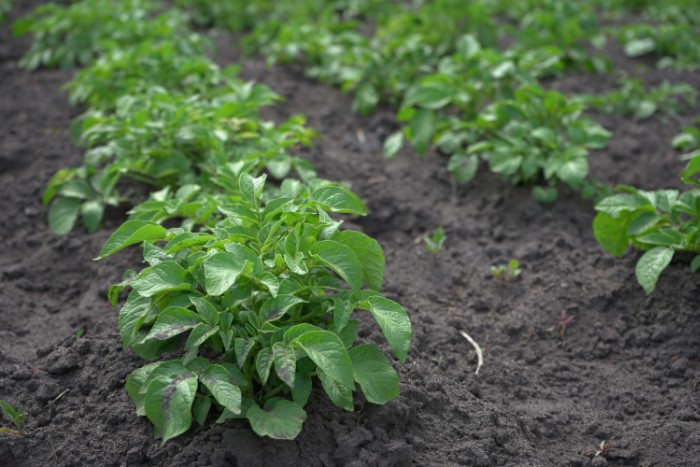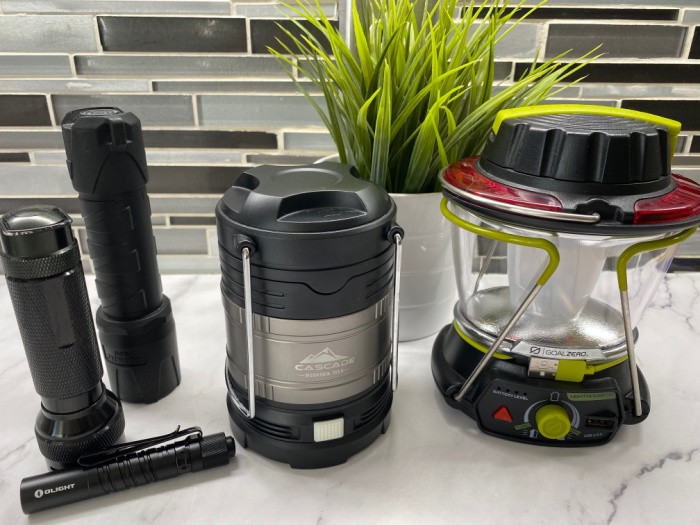What Every Prepper Should Know About Storing Potatoes
If you’ve been to the store recently, then you know the cost of potatoes has gone up. However, there is one thing you can’t deny and that is that potatoes are a great food to prep and to add to your food storage. So, pay attention to what every prepper should know about storing potatoes. Potatoes are so easy to cook too! Once you know how to store the potatoes, you can start learning the different ways to cook them. In case you missed this post, Baked French Fries
What Every Prepper Should Know About Storing Potatoes

What health benefits do potatoes offer?
Potatoes are often overlooked as a superfood, but they offer many health benefits that make them an essential part of any well-rounded diet. Potatoes are high in antioxidants, have anti-inflammatory properties, and can help regulate blood sugar levels. They are also a great source of dietary fiber, vitamin C, and potassium.
Potatoes are part of the stem tubers family like yams. Potato plants have the roots (tubers) safely underground where the plant’s nutrients are stored. We benefit from these nutrients when we prepare and eat potatoes as part of a healthy meal.
Eating potatoes has been linked to lower cholesterol levels, improved heart health, and even protection from certain illnesses such as cancer. As if that wasn’t enough, potatoes can also aid in digestion and weight loss goals.
Potatoes are considered starchy vegetables because more than 85% of the carbohydrates it contains are various forms of starch. Since carbohydrates are known to elevate blood sugar levels, be sure to check with your health professional before adding a lot of potatoes to your diet.
So, if you are going to have something nutritious stored for an emergency, then potatoes are a great option! Before you get started with storing potatoes, here is everything you need to know about growing potatoes.
There are a number of options when it comes to preparing your potatoes for storage. Let’s review the most common approaches:
Dehydrating Potatoes
Potatoes are one of the most versatile and delicious ingredients in any kitchen. When dehydrated, they can be used for a variety of recipes, from casseroles to soups and more! Here are some tips for dehydrating potatoes so you can enjoy them later. 6 Easy Ways to Use Dehydrated Potatoes
- Start with high-quality potatoes: Choose potatoes that are firm and free from bruises, blemishes, or other damage. Also, be sure that they are uniform in size in order to ensure even dehydration times.
- Wash them thoroughly: Before you begin dehydrating your potatoes, be sure to give them a thorough wash with cold water and a brush. You want them as clean as possible before beginning the process.
- Slice evenly: Use a sharp knife or mandoline slicer and cut each potato into thin slices (about 1/8 inch thick). Be sure to slice each piece very steadily so that they are all equal in size and thickness as much as possible. This will allow for consistent dehydration times across all the slices of potato. When dehydrating potatoes, cutting them into chunks really won’t work.
- Soak in brine solution: To help preserve color and texture during dehydration, soak your potato slices in a brine solution (a mixture of salt and water) for about 30 minutes prior to drying out the potatoes completely.
- Dehydrate your potatoes: Place the potato slices on a sheet pan lined with parchment paper or dehydrator trays if you have one available, making sure that none of the pieces overlap each other too much (otherwise they won’t dry evenly). Set your oven temperature on its lowest setting or use a food dehydrator set at 115 degrees Fahrenheit and leave it running for about 8-12 hours until your potato slices have dried out completely into chips or potato flakes depending upon their initial shape when sliced up initially.
- Store properly: Once fully dried out, store your potatoes in an airtight container such as a Ziploc bag or Mason jar in a cool, dark place away from any humidity sources, if possible.
Freezing Potatoes
Potatoes are one of the most versatile root vegetables in any kitchen. When frozen, they can be used for a variety of recipes, from casseroles to soups and more! Here are some tips for freezing potatoes for a longer storage life: 5 Incredible Food Preservation Methods
- You can follow steps 1-3 in the dehydrating potatoes section.
- Blanching is key: Before you freeze a potato it is important to blanch it in boiling water first. When you boil the potatoes it helps preserve their color, texture, flavor, and nutritional qualities significantly during storage. It’s better than just freezing them raw. Otherwise, doing this also kills off any surface microorganisms that may have been lingering on the potato prior to being frozen as well!
- Place your prepared potatoes onto a baking sheet lined with parchment paper: Make sure to drain the potato pieces and that none of the pieces overlap each other too much (otherwise they won’t freeze evenly). Once arranged properly on the baking sheet, place the baking sheet into your freezer for about 2-3 hours until your prepared potatoes have fully frozen completely into chips or cubes.
- Store properly: Once fully frozen, store the prepared potato pieces in an airtight container such as a Ziploc bag or Mason jar within the freezer, this will help maximize their storage life significantly!
Canning Potatoes
You can also can your potatoes. I’d suggest following my Pressure Canning 101: The Most Comprehensive Guide. This guide will walk you through how to properly can anything you need! Keep in mind that canning has been around for hundreds of years, so it’s proven to be a safe and effective way to prepare foods for longer-term storage. Please invest in one of these canning books, I cannot recommend any others. USDA Canning Guide or The Ball Canning Guide
Having the proper equipment and supplies will help guarantee a successful canning experience. It is critical that your storage jars and lids make a complete vacuum seal, so having quality jars and lids can make all the difference. Don’t settle for unknown brands and products.
Alternative Ways to Store Potatoes
- Store potatoes in a dry, dark place with plenty of ventilation right after they’ve been harvested from the field.
- Place unpeeled potatoes in a perforated plastic bag and store them in the refrigerator.
- Wrap each potato separately in newspaper or paper towel before storing.
- Place potatoes in a cardboard box lined with newspaper, burlap sacks, or mesh bags and store at 45-50 degrees Fahrenheit.
- Peel and slice potatoes before storing them submerged in cold water for up to two days.
Reburying Potatoes
You can rebury potatoes for storage. To do this, dig a shallow trench in well-drained soil (about 4-7 inches deep) and sprinkle the bottom of the trench with sand or sawdust to absorb excess moisture to the potatoes don’t rot. Place the potatoes in a single layer at the bottom of the trench, cover with an additional 2-3 inches of sawdust or sand, then fill in the rest of the trench with soil. Make sure that your potatoes are covered completely for protection against rain and other elements.

Root Cellar Storage
Root cellar storage is a great way to store potatoes for long-term use. To do this, find an area of your home that is cool (below 50 degrees Fahrenheit), in a dark area away from sunlight, and well-ventilated, such as a basement or garage. Place your potatoes in crates, boxes, or mesh bags, and then cover them with loose straw or sawdust for additional insulation.
You can place the potatoes in an air-tight container with some moist sand at the bottom too. Make sure to check the potatoes regularly for signs of mold or decay, and discard any spoiled produce immediately. 8 Places Preppers Store their Survival Supplies
Should potatoes and onions be stored together?
It’s not recommended to store potatoes and onions together. Potatoes give off a gas called ethylene gas, which will cause onions to sprout prematurely when stored together in the same area. It is best to store potatoes and onions separately in cool, dark, and well-ventilated areas. Onions: Everything You Need to Know
Which potatoes are best for storage?
Potatoes with a low moisture content and smooth skin are best for storage. The most common varieties of potatoes recommended for long-term storage include Yukon Gold, red potatoes called Red Norland, Dark Red Norland, and German Butterball. Potatoes that have been cured, meaning they have been stored in a dark, cool place (below 50 degrees Fahrenheit) for two weeks prior to storage, can last up to 10 months.

What are the signs and causes of a bad potato?
- Too much moisture
- Soft spots
- Shrinkage
- High humidity
- Wrong storage temperatures
How Do You Prepare for Potato Storage?
Storing potatoes correctly is essential for keeping them fresh and extending their storage life. Here are some key tips for preparing potatoes for storage:
- Choose firm, undamaged potatoes with no signs of sprouting or discoloration.
- Brush off any dirt but don’t wash the potatoes until right before you are ready to cook them, as washing can increase spoilage.
- Place the potatoes in a cool, dry, dark place away from direct light and other sources of heat. The ideal temperature is between 40-50°F (5-10°C).
- Don’t store potatoes near onions or other strong-smelling foods as this will cause them to absorb odors and spoil more quickly.
- Check your potato stock regularly and throw out any that have spoiled or molded before they contaminate the rest of your potato piles.
More Potato Tips:
- How To Make Mashed Potatoes
- How to Grow Sweet Potatoes
- The Best Slow Cooker Garlic Mashed Potatoes
- Potatoes: How To Store After Harvesting
- Cheesy Potato Casserole (Funeral Potatoes)
Have potatoes been an important part of food and health history?
People have relied on potatoes as a staple in their diet for centuries. One example is the Great Famine or Great Hunger period experienced in Ireland from 1845 through 1852. This country relied so much on potatoes for survival, that when a disease called potato blight affected crops throughout the country due to single-crop dependency, over 1 million people died. Because the population couldn’t find enough food to eat, another 2.1 million people left the country in a grand exodus.
Thank goodness that we’ve learned the importance of crop rotation, soil preparation, fertilization, effective watering techniques, and other agricultural advances so we don’t face this type of catastrophe today.
Final Word
After those potato harvests, you want nothing more than for your potatoes to taste good. It’s always important to store some for later use. I believe that these tips are what every prepper should know about storing potatoes. Potatoes have always been a great item to store for prepping and food storage. Even if you don’t grow them on your own, you should still try and find them on sale and start curing and storing as many as you possibly can! May God Bless this world, Linda
Copyright Images: Growing Potatoes AdobeStock_353891914 By Людмила Ко, Flowering Potatoes AdobeStock_312960737By V. J., Matthew, Farmer Holding Potatoes AdobeStock_167896783 y LIGHTFIELD STUDIOS























Great and informative post, Linda. This was a much needed post for me. We eat a lot of potatoes. They are good fixed in so many ways. Hubby is a meat and potatoes man. LOL
My mother stored some potatoes on the south side of a building, on the ground and covered with a lot of leaves one fall-winter. They stayed good until they were gone. She lived in the northern part of Texas.
HI Deborah, thank you for your kind words, my friend. Mark is a meat and potatoes man too! I love potatoes as well. I hope to grow some this year even if I have to grow some in those large garden-size bags. We can store them if we do it right for long periods of time like your mother. Linda
I liked the Goldens canned better than Russets
Hi Matt, that’s good to know. I like to grow Yukon Golds more than any other brand. Linda
Last year I grew Yukon Golds here in Tucson, AZ. They were so delicious and better tasting that the store-bought ones. From 5 seed potatoes, we got 4 lbs in waist-high grow boxes on our patio. I am going to plant them again this year. They stored well in our pantry. But they didn’t last that long either because they were so good.
Hi Carol, oh my gosh, those are my favorite potatoes to grow! Once you grow your own potatoes the store-bought ones just don’t taste as good!! I love hearing you grew 4 pounds!! Yay!!! Linda. P.S. I love digging for them, I’m like a kid in a candy store!
I bought a bag of potatoes a week ago and it was bad! Makes me so sad, but I know I can at least do some things to make them last longer. J
Hi Jess, what a shame, only a week only! Dang! Linda
With the cost of everything good for you skyrocketing, I decided to try an indoor garden with grow lights I bought at the dollar store (Winnipeg winters don’t allow for year round growing). My potatoes have just taken off!
Thank goodness for your article. EXCELLENT alternatives for storage.
Can’t thank you enough!
KT
Hi KT Reed, I love hearing you are growing potatoes indoors!! Oh my gosh, this is the best idea!! We just need the grow lights and good potato seeds!! I love this!!! Linda
Linda,
The Potato crop on my grandparents farm was mostly stored in the ground, just covered with a deep mulch. But we also dug bunches of them in the fall and stored them in layers of barely damp sand in the root cellar. I don’t have a root cellar and it’s so warm here that storing them in the ground results in them sprouting, so I layer them in slightly moist sand in plastic storage containers in a dark closet.
I love the flavor or Yukon Gold potatoes but so far I’ve only been able to grow small ones. I’m going to try companion planting them with beans this year as I’ve heard that will help inrease the size of my spuds.
Hi Ray, I had trouble growing red potatoes in Southern Utah so I switched to Yukon Golds. If we end up getting a permit to build we will build several raised garden beds. Fingers crossed! I will try the red, russet, and Yukon Golds again! Linda
I wish you well in both of those pursuits. The building bureaucracy up these must be a nightmare to take so long to issue you a permit. Did you have to subdivide your daughter’s lot? Re-zone?
Anyhow, just make your beds deep and as wide as is comfortable for you, as the heat in the SW stresses potatoes out–leading to small spuds.
HI Ray, oh my gosh, because you were a builder you know what we’re going through. She lives on 1/3 acre. We bought this house when she was divorced with 4 little kids about 20 years ago. Once she remarried we deeded the house to them. We are building an ADU (Accessory Dwelling Unit) in her backyard. Yes, we are back on the house title. We are building a smaller 1200-square-foot home and garage. The ADU is fairly new to this city although we drive around and see several. We got a notice on Feb 7th, 2 days ago, the builder had to make yet one more adjustment or whatever. This has been quite the experience. Looking back now, after 16 months, I wish we had not sold our home in Southern Utah. We shall see how the next month goes. Linda
Linda,
I wish you the best of luck with this. I got out of building because the bureaucrats in the building department were driving me nuts–not the inspectors, they were on my side. When the saw the type of quality construction I was doing they contracted with me to build homes for their kids. No, it was the administrators and the new fees and higher taxes and more fees that made me decide the business wasn’t worth putting up with their crap.
Hi Ray, you are so right! Every two weeks we hear, “should have approval by next week”. then the city finds something else. It’s awesome the inspectors wanted YOU to build their kid’s homes, it shows the quality and integrity of you as a builder. Linda
Linda,
I forgot to ad that we store our abundant carrot crop the same way. They last for months, and those I store in the ground stay good until the following spring. I grow Scarlett Nantes and Kuroda (both heirlooms) and have found they don’t get woody until they bolt.
HI Ray, oh I love storing carrots I used to do that when we lived in Logan Utah. We always had carrots for the year. Fresh veggies is the best! Linda